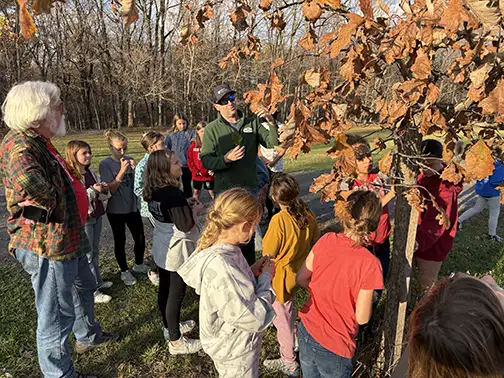“Mad BUCK” might sound like a reference to a Buckeye fan or a deer during rut season, but it’s actually a clever way to remember an important lesson about trees: Maple, Ash, Dogwood, and Buckeye are the only native trees with opposite branching, where stems grow directly across from each other on the main stem.
This fascinating tidbit was one of many shared by Steve McGinnis, Service Forester, during the Benjamin Logan Environmental Science Club’s annual tree hike at Myeerah Preserve. Students learned how to identify trees during winter, when leaves are absent, by observing branching patterns, fruits, and bark. The hike also highlighted the critical role native trees play in supporting the environment, from providing habitats for wildlife to maintaining ecological balance.
McGinnis’s presentation brought the world of trees to life, sparking curiosity and appreciation among the club members. Armed with their newfound knowledge, students gained a deeper understanding of the native trees that shape Logan County’s landscape.
After exploring the beauty of Myeerah Preserve, participants capped off the day with a cozy treat of hot chocolate and snacks, a perfect way to warm up and reflect on what they learned.
The annual tree hike is just one example of the Benjamin Logan Environmental Science Club’s commitment to engaging students in hands-on environmental education. Sponsored by Benjamin Logan teachers and supported by the Logan County Land Trust, the club connects young learners with nature and inspires them to become stewards of their environment.
Consider support the Logan County Land Trust and our programs through volunteering or by making a donation. Together, we can continue to nurture the next generation of conservationists.


